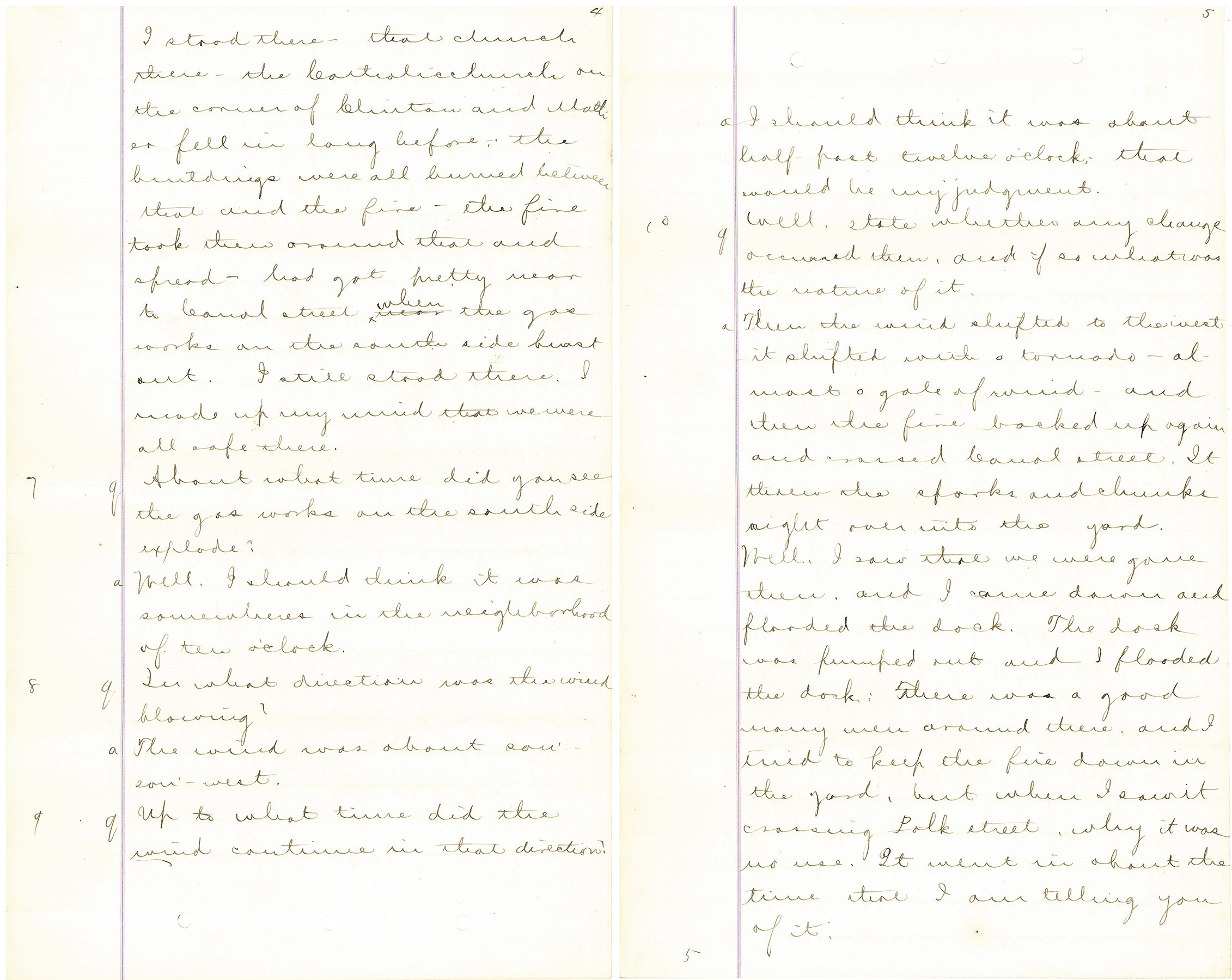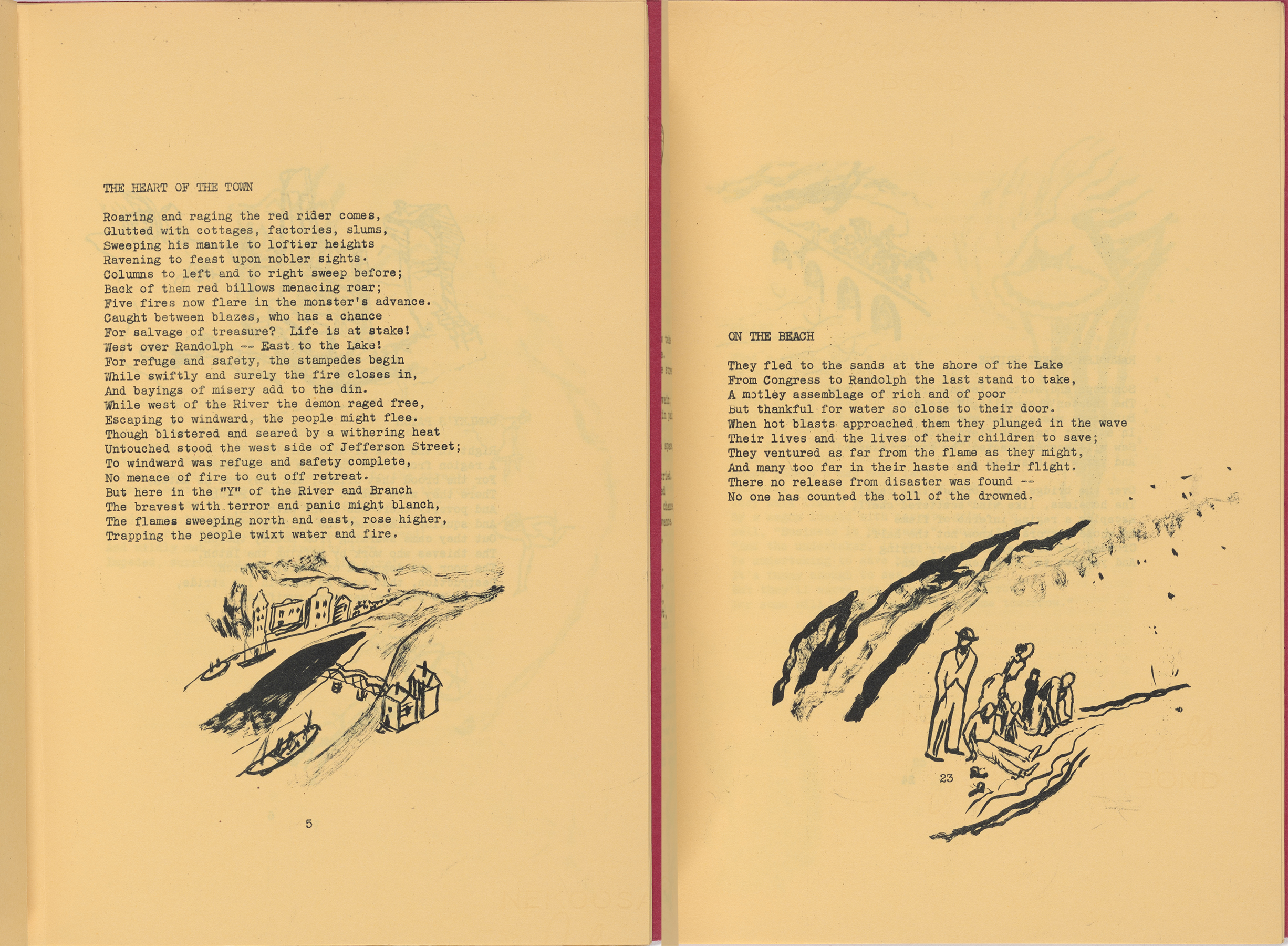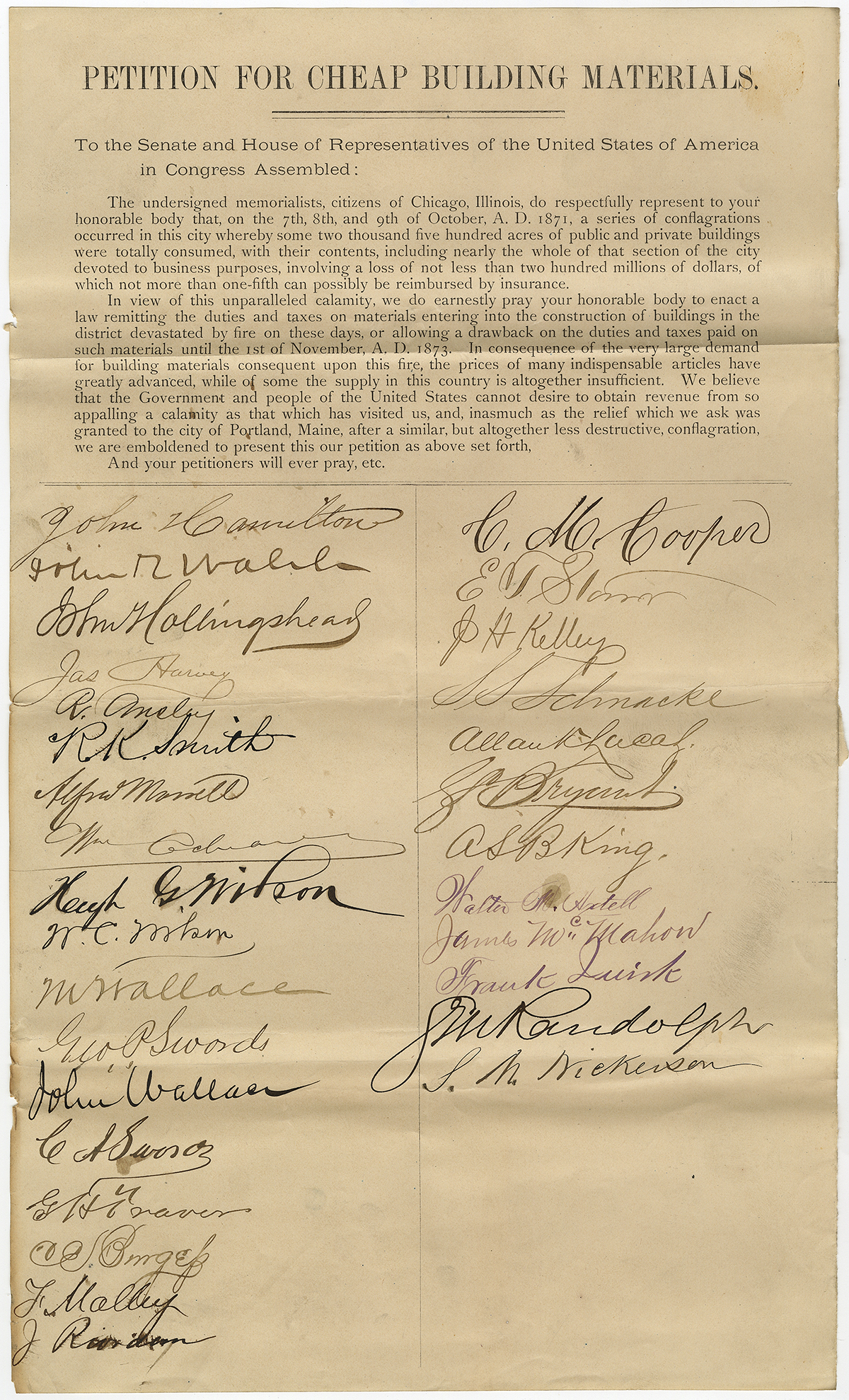150 Years Ago: The Great Chicago Fire
The Great Chicago Fire is one of the most famous fires in American history. Although Mrs. O’Leary’s legendary cow has been exonerated, the fire’s exact origin on the night of October 8, 1871, remains unknown. Once ignited, the fire quickly raged out of control thanks to ferocious winds, extremely dry conditions, and plenty of fuel. By the time rain extinguished the final flames on October 10, the conflagration had consumed The Loop (Chicago’s central business district), left an estimated 300 people dead, and one-third of the city’s residents homeless.
“I saw that we were gone then”
Chicago in the mid-19th century was built almost entirely of wood. Even the Chicago River, which was packed with wooden docks and vessels along its banks, did little to halt the conflagration. Jerome Osier’s testimony in this federal admiralty case file for the ship Fontenelle, which burned in the fire, describes the moment the fire breached the river’s South Branch: “the wind shifted to the west—it shifted with a tornado—almost a gale of wind . . . It threw the sparks and chunks right over into the yard.” After hitting The Loop, the fire jumped the Chicago River’s main branch and destroyed virtually the entire North Division of the city before dying out.

“Roaring and raging the red rider comes”
Fires were a common occurrence in Chicago, and few residents took notice when alarm bells rang out from the city’s West Side. Panic quickly set in, however, once the fire jumped the river and moved toward the heart of the city. Assembled 70 years after the last flames died out, this 1941 publication still powerfully conveys the terror and confusion as people fled for their lives through the city’s streets.

“In view of this unparalleled calamity”
Recovering from the Great Chicago Fire required an equally great rebuilding effort. Over 17,000 structures were destroyed in a more than three square mile area known as the “Burnt District.” This 1872 petition was sent to the U.S. Senate in an effort to secure financial relief from tariffs and import duties on building materials. Despite the extent of the damage, the city recovered quickly; however, Chicagoans did not benefit equally. Poorer residents who lacked the resources of the wealthy faced much greater hardship rebuilding their homes and reclaiming their livelihoods.

